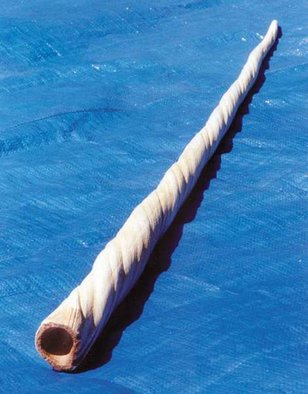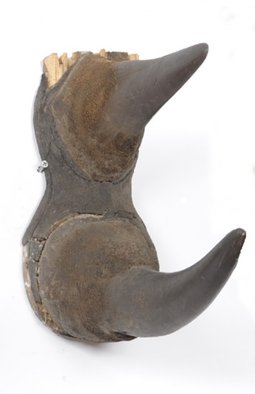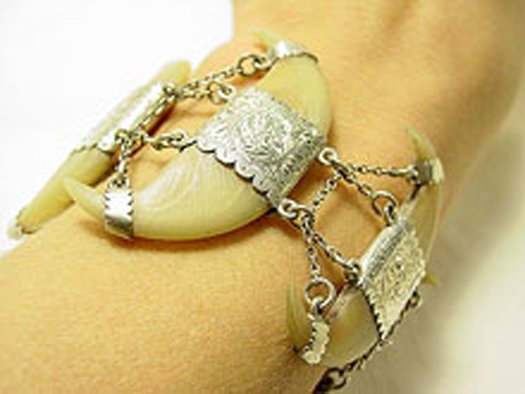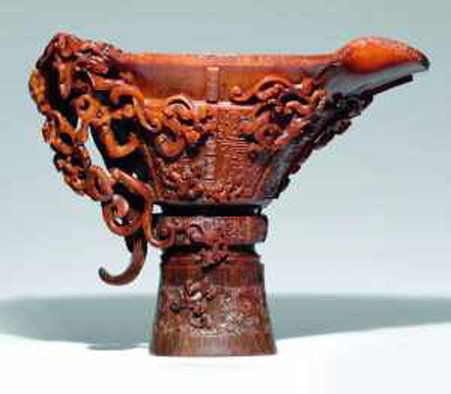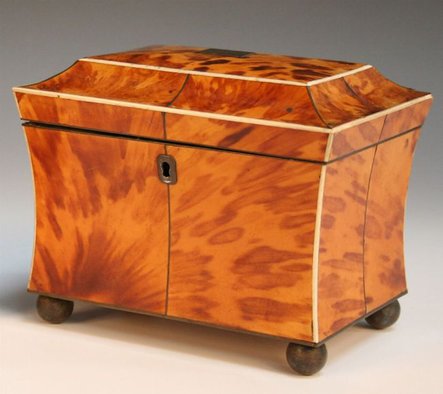EUR-Lex Access to European Union law

This document is an excerpt from the EUR-Lex website
Document 52017XC0517(02)
Commission Notice — Guidance on Worked Specimens under the EU Wildlife Trade Regulations
Commission Notice — Guidance on Worked Specimens under the EU Wildlife Trade Regulations
Commission Notice — Guidance on Worked Specimens under the EU Wildlife Trade Regulations
C/2017/3108
OJ C 154, 17.5.2017, p. 15–26
(BG, ES, CS, DA, DE, ET, EL, EN, FR, HR, IT, LV, LT, HU, MT, NL, PL, PT, RO, SK, SL, FI, SV)
|
17.5.2017 |
EN |
Official Journal of the European Union |
C 154/15 |
COMMISSION NOTICE
Guidance on Worked Specimens under the EU Wildlife Trade Regulations
(2017/C 154/07)
This guidance is intended to assist EU Member States and stakeholders in assessing what may or may not qualify as ‘worked specimens that were acquired more than 50 years previously’ (‘worked specimens’) under the EU Wildlife Trade Regulations (1), and thus should be helpful for deciding when to apply for worked specimens the general derogation from the need to get a certificate for intra-EU trade for specimens of species listed in Annex A to Council Regulation (EC) No 338/97.
This guidance may also be applied in cases of introduction into or (re)exportation from the EU, where conditions for issuance of import or export permits/re-export certificates for worked specimens of species listed in the Annexes to Regulation (EC) No 338/97 are less restrictive than for other specimens of these species (2).
Because of the wide variety and range of items that may fall under the definition of worked specimens, this guidance is intended only as a guide to assist in assessing whether the worked specimens definition may apply. In case of any doubt about whether or not an item qualifies as a worked specimen, an application for a commercial use certificate for intra-EU trade should be made to the CITES Management Authority.
This is a guidance document prepared by the Commission and unanimously endorsed by the group of experts of the competent CITES management authorities.
This guidance document constitutes an expression of how the Commission interprets Regulation (EC) No 338/97, and of measures it considers to constitute best practice. It is intended to assist national authorities, citizens and businesses in the application of EU Wildlife Trade Regulations. Only the Court of Justice of the European Union is competent to authoritatively interpret Union law.
Some EU Member States and other non-EU countries may apply stricter national controls on items which may or may not be used for commercial purposes. The rules in place in the country of destination should therefore be checked before moving a worked specimen.
1. Introduction
|
1.1. |
The definition of ‘worked specimen’ is given in Article 2 (w) of Regulation (EC) No 338/97: ‘“worked specimens that were acquired more than 50 years previously” shall mean specimens that were significantly altered from their natural raw state for jewellery, adornment, art, utility or musical instruments, more than 50 years before the entry into force of this Regulation (3) and that have been, to the satisfaction of the management authority of the Member State concerned, acquired in such conditions. Such specimens shall be considered as worked only if they are clearly in one of the aforementioned categories and require no further carving, crafting or manufacture to effect their purpose.’. Specimens qualifying as worked specimens are commonly referred to as ‘antiques’. This guidance is applicable to all cases where the definition of worked specimens applies under the EU Wildlife Trade Regulations, namely:
|
|
1.2. |
According to the abovementioned definition of ‘worked specimen’, the management authority of the Member State concerned must be satisfied that the specimen was acquired in such conditions that meet the definition of a worked specimen. The definition can be broken into the following criteria, all of which need to be assessed:
This guidance addresses these criteria by answering the following questions:
|
2. Assessing whether a worked specimen has been manufactured/worked prior to 3 March 1947
|
2.1. |
The specimen must have been manufactured/worked more than 50 years before the entry into force of Regulation (EC) No 338/97, i.e. prior to 3 March 1947. |
|
2.2. |
Specimens that have been reworked prior to 3 March 1947 may be considered as worked specimens for the purpose of the derogation if they meet the other conditions of the worked specimen's definition. |
|
2.3. |
A specimen which was worked or reworked after 1947 would not meet the definition even if the specimen could be dated to before 3 March 1947. For example, an ivory billiard ball that has been reworked into a walking stick handle would not meet the derogation if it was reworked in the 1960s even if the ivory could be dated to pre-1947. Another example would be timber that may be dated to pre-1947, but the specimen was worked after 3 March 1947. |
|
2.4. |
The person who acquired the specimen(s) before 3 March 1947 does not have to be the current owner. |
3. Assessing whether specimens have been ‘significantly altered from their natural raw state for jewellery, adornment, art, utility, or musical instruments’
|
3.1. |
The purpose of the alteration of the specimen must clearly be for jewellery, adornment, art, utility, or musical instruments. In addition, the specimen should not require any further carving, crafting or manufacture for it to effect its purpose. |
|
3.2. |
These conditions can only be assessed on a case by case basis (see also Section 4). |
|
3.3. |
In order to qualify as a worked specimen, a part of an animal (such as teeth, tusks, horns, antlers, skin, bones or shells) have to be significantly altered from its natural raw state, such as by carving, engraving, or manufacture into another form. |
|
3.4. |
Polishing or fixing a specimen to another material, such as mounting, does not qualify the item as worked specimen. |
|
3.5. |
Any alteration to a specimen should be irreversible. There must also be clearly no interest or intent to use the specimen for other purposes. |
|
3.6. |
For elephant ivory, this means that raw tusks, or pieces of tusks (which may be polished, but not carved or engraved), whether or not attached to the skull, do not qualify as worked specimens (5). For a tusk or part of a tusk to qualify as worked, the specimen must have been subject to significant carving or engraving over at least 90 % of its surface. Light carving, engraving, or surface markings where the form of the tusk remains substantially the same as its natural raw state would not be deemed worked. |
|
3.7. |
For a rhino horn or part of it, light carving, engraving, or surface markings where the form of the horn remains substantially the same as its natural raw state would not be deemed worked. |
|
3.8. |
Rhino horn specimens such as whole or part horns with clocks, inkwells, barometers or other objects inserted in them, where the horn remains substantially unaltered and/or where insufficient artistic merit can be independently demonstrated in accordance with the paragraph 5.6 of this guidance, do not qualify as worked specimens. The EU Guidance document on the Export, re-export and intra-Union trade of rhinoceros horns (6) should also be taken into account. |
|
3.9. |
Skulls, skeletons (whether wholly or partially articulated) or individual bones which have been cleaned, primed, polished, mounted or otherwise prepared would not be deemed worked specimens. Skulls and horns that have been mounted (including when horns are attached to a skull), on a wooden plaque or base for example, would not qualify as worked specimens. |
|
3.10. |
In general, stuffed (taxidermied) animals — for example mounted and stuffed birds — would meet the condition of being ‘significantly altered from their natural raw state’ within the worked specimens' definition (see European Court of Justice, case C-154-2). |
|
3.11. |
Appendix I of this guidance provides illustrative examples of specimens which, although acquired in their finished state before 3 March 1947, would not qualify as worked specimens, because they have not been sufficiently altered. |
|
3.12. |
Appendix II of this guidance provides illustrative examples of specimens acquired in their finished state before 3 March 1947, often commercially traded, which would classify as worked specimens, because they have been sufficiently altered. |
4. Assessing whether the degree of ‘renovation’ and ‘reworking’ is acceptable for a specimen to still meet the criterion ‘require no further carving, crafting or manufacture to effect their purpose’
|
4.1. |
In general, ‘worked specimens’ cannot be reworked and must remain in their original ‘worked’ state after 3 March 1947, regardless of the age of the material concerned (7). |
|
4.2. |
However, it is unrealistic to expect items to survive several centuries in the original condition and thus legitimate commercial activities involved in renovating antique items are allowed. Renovation cannot change the effect of the specimen as originally intended. |
|
4.3. |
Reworking using CITES listed material acquired from after 3 March 1947 would mean the item would no longer qualify as a worked specimen. For example, specimens of Dalbergia nigra (Brazilian rosewood) such as floorboards or panelling reworked to form the bodywork for new guitars would not qualify as renovation. Also excluded from the scope of the definition would be the use of two damaged items to make one perfect one. For example, taking two damaged tea caddies, completely dismantling both of them and then making one new tea caddy from the undamaged elements of both would not meet the definition. |
|
4.4. |
However, repair not involving CITES-listed materials would qualify for the definition of a worked specimen. For example, replacing the brass hinges on an antique tea caddy made from CITES-listed tortoiseshell would meet the conditions of the definition, if it meets also other requirements. |
|
4.5. |
Many items are renovated by taking material from other irretrievably damaged examples in order to renovate or repair the one good example. When CITES-listed material is used for renovation, this material must date from before the species was listed on the CITES Convention for the renovated item to still qualify as a worked specimen. For example, where ivory inlaid furniture needs additional ivory inserted to repair damage to the original inlay, provided that the ivory used for such a repair dates from before the species was listed on the CITES Convention (i.e. ‘pre-Convention’) it may be classified as renovation and the item may still qualify as a worked specimen, if it also meets other requirements. Equally, pre-Convention tortoiseshell taken from one tea caddy to renovate another may be classified as renovation and not reworking. |
5. Assessing whether the Management Authority of the Member State concerned can be satisfied that the item has been acquired in such conditions that meet the definition of a ‘worked specimen’
|
5.1. |
The responsibility for demonstrating that a particular specimen meets the definition of a worked specimen rests with the item's owner or vendor. |
|
5.2. |
On receipt of an application, Management Authorities will consider the EU Wildlife Trade Regulations, this guidance, any other relevant species-specific guidance documents and past precedents to determine if the item satisfies the conditions to qualify as a worked specimen. |
|
5.3. |
Except for cases referred to in paragraph 5.6, it would be acceptable to the Management Authority for a worked specimen's age and for the assessment whether the specimens qualifies as jewellery, adornment or art, to be verified by a person with expertise in the relevant field. This could be an antiques specialist, museum curator etc., who is recognised by a relevant trade association, representative body or similar organisation. This may be the person involved in the associated commercial use of the specimen concerned if the person has the relevant expertise. |
|
5.4. |
Some Member States may rely on specified individuals to make appraisals of a specimen's age and whether the specimen qualifies as jewellery, adornment or art, so applicants should check with their Management Authority. |
|
5.5. |
Evidence of provenance supplied by owners in the form of original dated receipts or bills of sale, or dated newspaper articles containing photographs or detailed descriptions of the specimen may also be acceptable as proof of age of the specimen to the CITES Management Authority. |
|
5.6. |
However, if the Management Authority has doubts about the age of the specimen or about whether the specimen qualifies as jewellery, adornment or art, especially where high risk species such as elephants, rhinos and tigers are concerned, and/or where deliberate non-compliance is suspected, the Management Authority may decide that independent verification should be provided by an expert not involved in the commercial exploitation of the specimen in question. It should not, for example, be undertaken by the buyer or seller or another intermediary, such as an auction house, involved in the sale of the specimen. |
|
5.7. |
Such independent verification of the age of the specimen may also include verification by any available scientific means (such as radio-carbon dating for instance). However, when requesting such additional independent verification, it should be taken into account that even using methods such as these, accurate dating can sometimes be difficult to achieve and that large samples from the specimen may be required, causing possible damage to the specimen and potentially affecting its artistic and monetary value. |
|
5.8. |
Stuffed animals, especially birds of prey, are difficult to age and it can be difficult to prove that the specimen was in its finished state before 3 March 1947. Where renovation of stuffed animals has taken place, this can further compromise the verification process. To qualify for a worked specimen in case of a renovated stuffed animal, sufficient evidence of the specimen's original worked acquisition status needs to be provided to the Management Authority. |
|
5.9. |
Management Authorities may require or introduce additional measures to be used in an assessment, so it is important for the applicant to check at the time of presenting application that all necessary information has been provided. |
(1) Council Regulation (EC) No 338/97 of 9 December 1996 on the protection of species of wild fauna and flora by regulating trade therein (OJ L 61, 3.3.1997, p. 1) and its implementing regulations.
(2) See Articles 4(5)(b) and 5(6)(i) of Regulation (EC) No 338/97.
(3) ‘50 years before the entry into force of this Regulation’ being before 3 March 1947.
(4) Commission Regulation (EC) No 865/2006 of 4 May 2006 laying down detailed rules concerning the implementation of Council Regulation (EC) No 338/97 on the protection of species of wild fauna and flora by regulating trade therein (OJ L 166, 19.6.2006, p. 1).
(5) CITES Res. Conf. 10.10 (Rev. CoP17): (a) the term ‘raw ivory’ shall include all whole elephant tusks, polished or unpolished and in any form whatsoever, and all elephant ivory in cut pieces, polished or unpolished and howsoever changed from its original form, except for ‘worked ivory’; and (b) the term ‘worked ivory’ shall be interpreted to mean ivory that has been carved, shaped or processed, either fully or partially, but shall not include whole tusks in any form, except where the whole surface has been carved.
(6) Commission notice Guidance document: export, re-export, import and intra-Union trade of rhinoceros horns (2016/C 15/02).
(7) See para. 2.2 and 3.1 of this Guidance.
Appendix I
EXAMPLES OF ITEMS WHICH WOULD NOT QUALIFY AS ‘WORKED SPECIMENS’
|
|
Uncarved tusks or parts of tusks, despite being part of an overall antique item, would not qualify as ‘worked’. Examples of such items also exist which have been manufactured from rhino horn, narwhal tusks and tiger claws. |
|
|
Carved elephant tusk does not have significant carving or engraving over at least 90 % of its surface and would not qualify as ‘worked’. |
|
|
Whole marine turtle shells frequently occur in trade but would not qualify as ‘worked’ unless the taxidermied animal is still attached to the shell. Lacquering and/or polishing of the shell would not qualify as ‘working’. Neither would the addition of fixings for wall mounting. |
|
|
Saw fish rostrums would not qualify as worked specimens. |
|
|
Narwhal tusks and whole teeth from Cetacea would not qualify as worked specimens. However, see scrimshaw under worked specimens ‘Art’. |
|
|
Rhino horn and other Annex A specimens where horns and/or skulls have been mounted on a wooden plaque would not qualify as ‘worked’. Particular care should be exercised with rhino horn specimens which are frequently bought and sold (often by weight) at greatly inflated prices in order to enter the illegal traditional medicine market. Other rhino horn specimens not significantly altered from their raw natural state, such as with other objects inserted into them (e.g. clocks, inkwells, barometers or other items) would not qualify as ‘worked’. |
|
|
Tiger claw bracelet mounted in silver. As the tiger claws themselves are ‘unworked’, i.e. unaltered from their natural state, they would not qualify as a worked specimen. |
Appendix II
EXAMPLES OF ITEMS WHICH ARE LIKELY TO QUALIFY AS ‘WORKED SPECIMENS’
|
Section 1 |
Jewellery & adornment |
|
Section 2 |
Art |
|
Section 3 |
Utility |
|
Section 4 |
Musical instruments |
Section 1 — Jewellery and adornment
|
|
Carved ivory wrist bracelets providing that they pre-date March 1947. However, there are many examples of modern bracelets being passed off as ‘antique’ and care should be taken before agreeing sales of such items. Working itself cannot be dated, which means that documentary evidence would be required to date such a specimen. |
|
|
Carved ivory beads, for the same reasons as above. |
Section 2 — Art
|
|
Carved rhino horn libation cup. Age usually determined by experts from the antique industry. Most examples seen in reputable trade will probably date from the 18th century and earlier. |
|
|
Elephant tusk carved over at least 90 % of its surface is likely to qualify as a ‘worked specimen’. |
|
|
Carved ivory figurine. |
|
|
Rhino horn ceremonial spoon. |
|
|
Taxidermy specimens (but note advice on ‘renovation’ at paragraph 5.8) |
|
|
Scrimshaw whale’s tooth (the surface of the specimen engraved with pictures and/or lettering, with the engraving highlighted using a pigment) |
Section 3 — Utility
|
|
Handbags, shoes, wallets watchstraps, etc. Typically manufactured from crocodile or snake skin. |
|
|
Alligator skin lady’s shoe — very popular and many examples still exist from around the 1930s. Usually sold through specialist shops but now increasingly through internet trade. |
|
|
Clothing — note, it is extremely difficult to determine the age of items of clothing and often, unless the label gives a date, or the age of the item can be determined from company records, it may be useful to consult fashion experts. |
|
|
Tea caddy, the case often fashioned from tortoiseshell (marine turtle) or may include Brazilian rosewood or ivory inlay. |
|
|
Furniture, which may be made of rosewood or include ivory inlay. |
|
|
Ivory billiard balls. Note — these frequently occur in trade having been reworked into umbrella or walking stick handles/heads. Where such items have been ‘reworked’ after 3 March 1947, they will no longer meet the definition of a worked specimen. |
|
|
Ivory handled gentlemen’s walking sticks which were often manufactured during both the 18th and 19th Century. However, care must be taken on taking such items on trust as many have been reworked from other ivory specimens and are in many cases modern in manufacture. |
|
|
Elephant’s foot umbrella stand which has been taxidermied and lined with another substance to constitute the ‘worked specimen’ |
|
|
Tiger skin rug — providing the specimen is tanned. If the taxidermied head of the original animal remains naturally attached to the skin even if the skin is not tanned the rug is likely to be considered ‘worked’. Claws and teeth would not exclude rugs or taxidermied heads or whole specimens from the definition. |
|
|
Tortoise shell tea caddy with modelled wooden head and legs and internally altered is likely to qualify as a ‘worked’ specimen. |
Section 4 — Musical instruments
|
|
Bagpipes, which are often adorned with ivory ferrules. Other woodwind instruments such as clarinets etc. may also have ivory banding. |
|
|
Antique pianos, which almost always include ivory keys but may also include ivory inlay or rosewood marquetry. Note — replacement ivory keys are frequently used from pianos not considered saleable in the antique renovation business. |
|
|
Stringed instruments such as guitars etc. often include ivory inlaid on the bridge, fret board and tuning keys (keys to which the strings are attached and tightened). They may also include bodywork (fronts or backs) made from Brazilian rosewood. |






